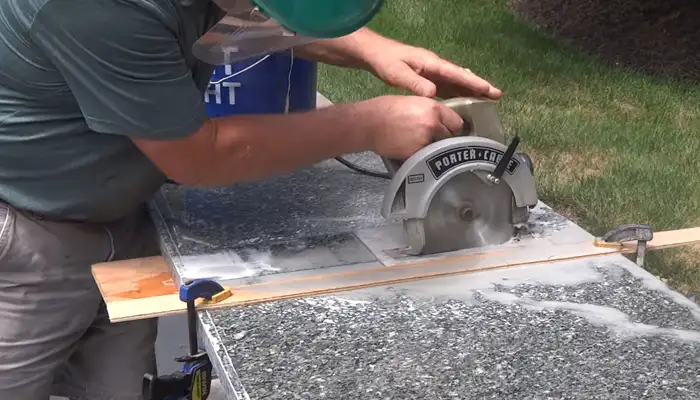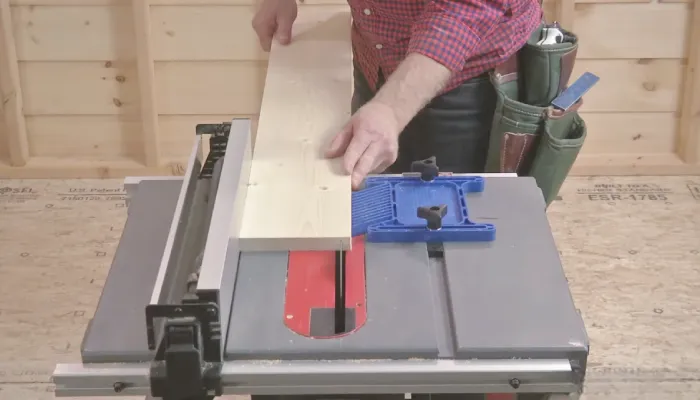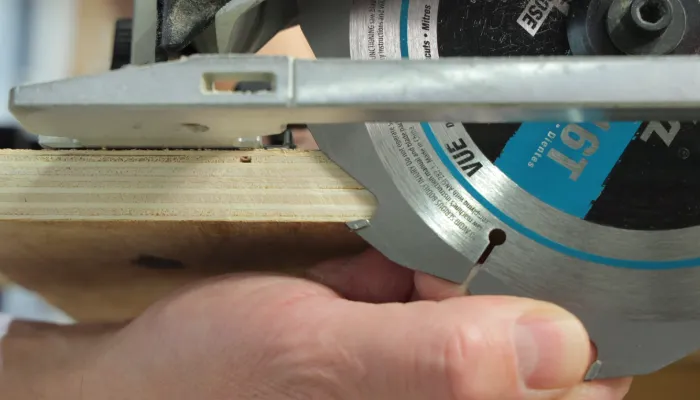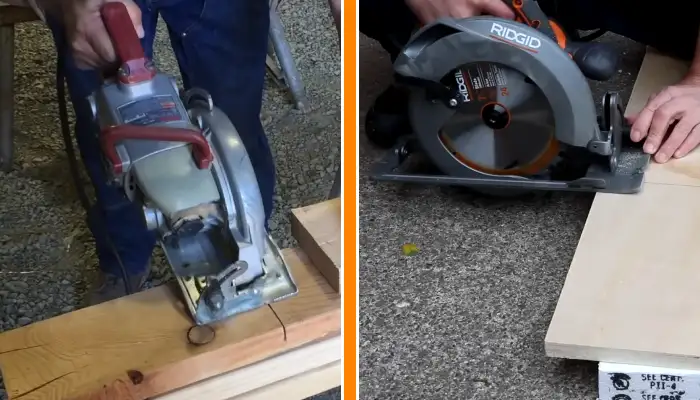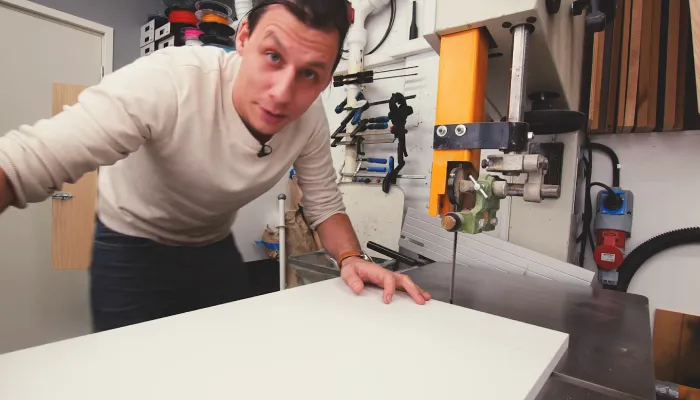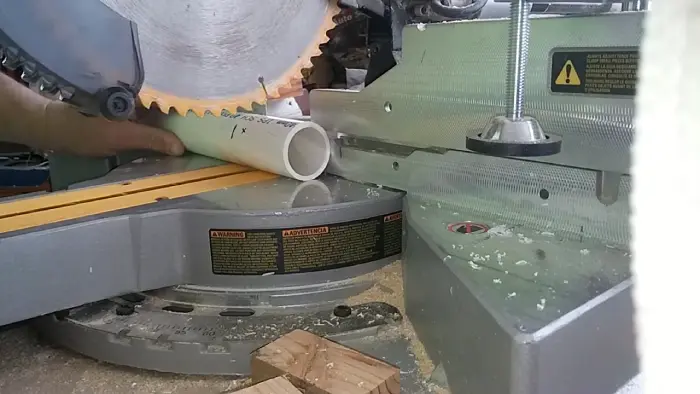Can You Cut Tile With a Circular Saw: Know the Real Truth
As far as I can tell, cutting tiles is messy and difficult, especially if you’re using the wrong tool. However, after conducting my research, I found that a circular saw can greatly simplify the process and provide precise and clean cuts.
Yes, you heard that right, you can actually cut tile with a circular saw. In fact, it’s a highly effective tool for cutting tiles, especially for large works. To ensure smooth and accurate cuts, choose a blade specifically designed for cutting tile for a clean and smooth cut.
I’ll share everything you need about using a circular saw to cut tiles in the following article. I’ll cover everything from the types of tiles that can be cut to the specific blade you’ll need. So, if you want to tackle a tile-cutting project, keep reading.
How Do You Cut Tiles With a Circular Saw?
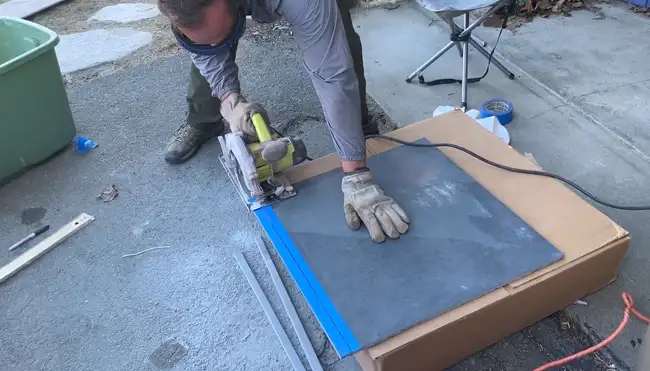
When cutting tiles with a circular saw, I’ve outlined four important steps you need to follow.
- Choose the correct blade and adjust the saw
- Mark and secure the tile
- Execute the cutting process
- Clean-up and finishing touches
Gather the Right Equipment and Materials
Before diving into the cutting process, ensure you have the necessary tools and materials.
- Circular saw with a diamond-coated blade
- Respirator mask, safety glasses, and gloves
- Measuring tape and straight-edge
- Water spray bottle
Step 1: Choose the Correct Blade and Adjust the Saw
To cut tiles with a circular saw, you must select the correct blade and adjust the saw. Choose a diamond-coated blade specifically designed for hard materials like porcelain. The blade size should match the circular saw to ensure proper fit and functionality.
Also, set the saw’s cutting depth to match the thickness of the tile you are working with. This will help achieve clean and precise cuts. Another important consideration is using the circular saw for wet or dry cutting. Each method has pros and cons, so weighing them before deciding is essential.
Step 2: Mark and Secure the Tile
Now, mark and secure the tile before cutting it with a circular saw. To begin, measure and mark the tile where you want to cut. Using a straight edge as a guide ensures accurate measurements.
Once the marking is done, secure the tile on a stable surface. It’s crucial to prevent any movement during the cutting process. You can use clamps or adhesive to hold the tile firmly in position. This ensures a clean and precise cut.
Step 3: Execute the Cutting Process
To execute the cutting process with a circular saw, start by ensuring the blade is cool and making slow, deliberate cuts along the marked line. This is crucial for achieving precise cuts and preventing damage to the tile.
If wet cutting, using a water spray bottle is recommended to keep the blade cool and minimize dust. This helps with the cutting process and ensures a cleaner work environment.
If you’re dry-cutting, wear a respirator to protect against dust particles. Additionally, cutting slowly is essential to prevent the saw blade from overheating and any other incidents.
Step 4: Clean Up and Finishing Touches
After cutting with a circular saw, clean up the workspace and refine the edges, ensuring a smooth finish. If there are any rough edges or imperfections, I use an angle grinder to smooth them further and refine them. This tool allows for precise adjustments, ensuring the tiles fit seamlessly together.
What to Consider When Cutting Tile Using a Circular Saw?
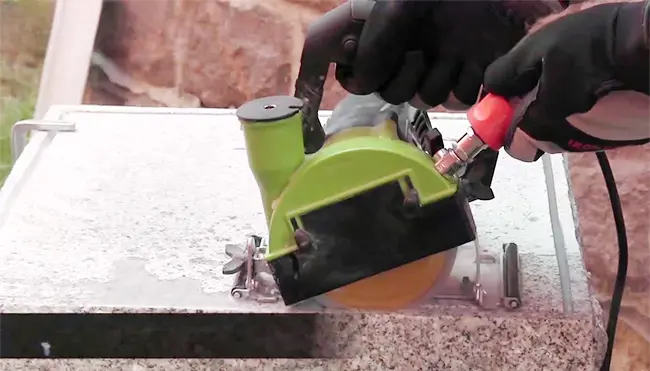
When cutting tile with a circular saw, several important factors must be considered.
1. Tile Type
My study has shown me that considering the hardness level of the specific tile you’re working with is crucial when cutting tile using a circular saw.
Different tiles, such as porcelain, ceramic, and natural stone, have varying hardness levels. Porcelain tiles are known for their durability and hardness, making them more difficult to cut than ceramic tiles.
Natural stone tiles, like granite or marble, are even harder and may require specialized blades to cut effectively. It’s important to understand the hardness of the tile you’re working with to select the appropriate blade and cutting techniques.
2. Cutting Technique
Continuing from the previous subtopic, consider several factors to ensure a successful outcome during the cutting process using a circular saw.
First and foremost, practice slow and deliberate cutting techniques to avoid overheating the blade and to achieve precise cuts. Keep the saw steady and follow the marked lines accurately to maintain accuracy and prevent mishaps.
Additionally, if you’re using a wet-cutting method, employ a water spray bottle or another cooling mechanism to keep the blade cool throughout the cutting process. This will help prevent overheating and ensure smoother cuts.
3. Cutting Speed
Consider the appropriate cutting speed to achieve optimal results when cutting tile with a circular saw. Adjusting the cutting speed based on the type of tile and the blade used is crucial for a clean and precise cut.
Cutting too fast can cause the tile to chip or crack while cutting too slow can result in a jagged or uneven edge. A higher cutting speed can be used for softer materials like ceramic or porcelain. However, a slower cutting speed is recommended for harder materials like natural stone or granite.
It’s important to read the manufacturer’s instructions for the circular saw and the blade to determine the recommended cutting speed for each type of tile. You can ensure a professional-looking finish for your tile-cutting projects by considering the appropriate cutting speed.
4. Work Area Preparation
Preparing the work area is important when cutting tile with a circular saw to ensure a safe and efficient cutting process. To start, set up a clean and organized work area, free from clutter or obstacles. This will help prevent accidents and ensure you have enough space to maneuver the saw.
A sacrificial board underneath the tile is crucial to prevent chipping and damage to the surface below. Make sure to secure the tile and the sacrificial board tightly to avoid any movement during the cutting process.
What kind of tiles can be cut using a circular saw?
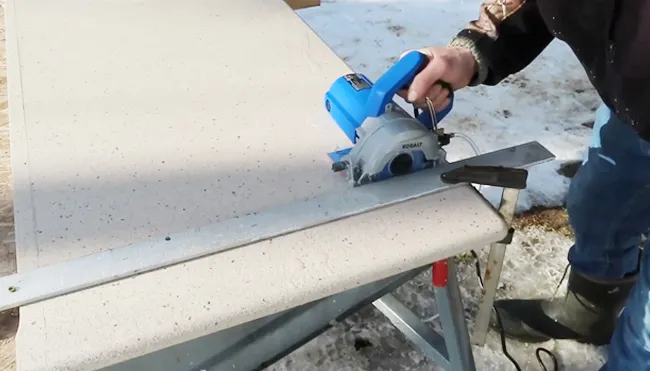
Using a circular saw, you can cut ceramic, porcelain, mosaic, granite, and marble tiles. When cutting ceramic or porcelain tiles, use a diamond blade specifically designed for these materials. These blades have a continuous or turbo rim design that allows for clean cuts without chipping or cracking the tiles.
A diamond blade with a continuous rim is also recommended for mosaic tiles to ensure precision cuts. When cutting granite or marble tiles, a segmented diamond blade is the best choice. These blades have small gaps between the diamond segments, allowing for efficient cutting and reducing the risk of overheating.
What kind of circular saw blade do I need to cut tiles?
I recommend using a diamond blade with a circular saw for cutting tiles. A diamond blade is perfect for cutting ceramic, porcelain, mosaic, granite, and marble tiles.
Diamond blades, unlike other blades, are designed to score and grind the tile, allowing for clean and precise cuts. The diamond particles embedded in the blade make it incredibly durable and capable of cutting through even the toughest materials.
When using a circular saw with a diamond blade, it’s important to ensure that the blade is properly aligned and securely attached to the saw. Also, follow safety precautions and wear protective gear when cutting tiles with a circular saw.
Can I angle-cut the tiles with a circular saw?
From my study, I can confidently say you can cut angles in tiles with a circular saw. To achieve precise cuts across large-format materials, an adjustable fence guide is essential. It attaches directly to the saw’s base plate so that you can set the angle.
This is especially useful when working with tiles cut at specific angles, such as for corners or diagonal patterns. The adjustable fence guide ensures that your cuts are accurate and straight, producing a professional-looking finish.
Note that when angle-cutting tiles with a circular saw, you should always wear appropriate safety gear, such as goggles and gloves, and follow the manufacturer’s instructions for your specific saw model.
What are the advantages of wet-cutting tiles with a circular saw?
The benefits of wet-cutting ceramic tiles with a circular saw include smoother cuts, decreased dust, and less strain on the equipment.
Wet cutting involves using water to cool the blade, which helps to prevent overheating and reduces the risk of chipping or cracking the tiles. The water also acts as a lubricant, allowing the blade to glide through the material smoothly, resulting in cleaner and more precise cuts.
Also, wet cutting significantly reduces the dust produced during the cutting process. This is particularly beneficial when working indoors or in confined spaces, as it helps to maintain a cleaner and healthier work environment.
Furthermore, the water helps to keep the circular saw’s blade cool, preventing it from overheating and prolonging the equipment’s lifespan.
Cut Tiles with a Circular Saw to Achieve Precise Cuts
Cutting tiles with a circular saw is possible and can be done effectively with the right blade and technique. You can achieve precise cuts with a circular saw if you consider the factors I explained, including the type of tile, using the appropriate blade, and taking precautions.
While purchasing a saw and the right blade may require some initial investment, the long-term benefits can be significant. Wet-cutting tiles with a circular saw offer advantages such as reducing dust and keeping the blade cool.
So, if you’re interested in trying this method, I recommend following proper safety precautions and choosing the right blade for the type of tile you’re working with. With a little practice and care, you can become a pro at cutting tiles with a circular saw.

